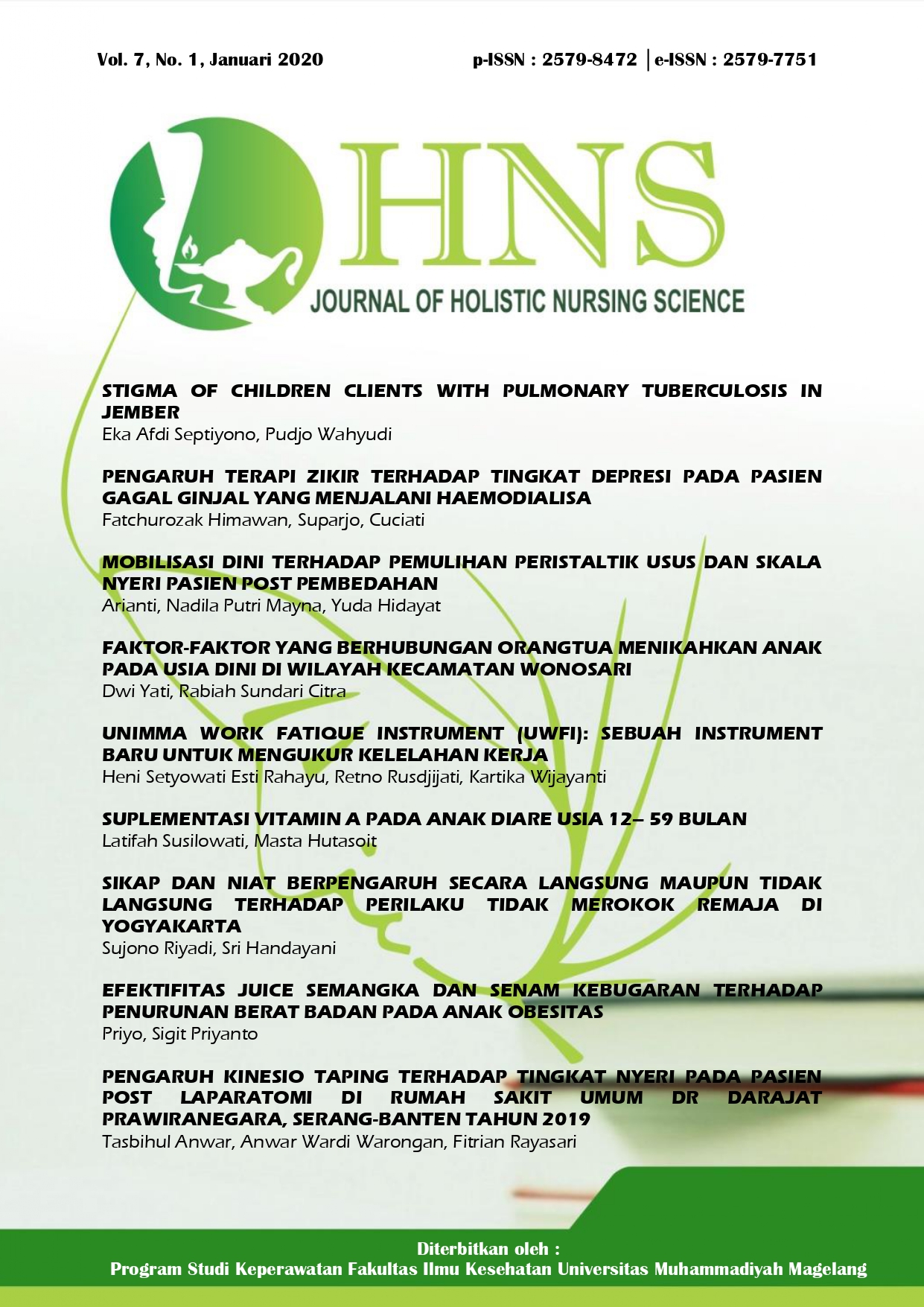EFEKTIFITAS JUICE SEMANGKA DAN SENAM KEBUGARAN TERHADAP PENURUNAN BERAT BADAN PADA ANAK OBESITAS
Main Article Content
Abstract
The culture of consuming instant food and reducing physical exercise result in increasing obesity in children today. The impact that occurs if not overcome can lead to the occurrence of various types of non-infectious diseases in the future such as: heart disease, hypertension, stroke and diabetes. To overcome the problem of obesity, behavioral changes are needed in childhood, namely fruit consumption and regular exercise. However, this behavior still becomes a national problem, especially in Magelang Regency. Consuming fruit juice and having exercise enables ones to lose weight.A kind of fruits that can be consumed is watermelon and the kind of sport that can be practiced is fitness exercise. The research is aimed to identify the difference in effectiveness between consuming watermelon juice and having fitness exercises in weight loss in obese children at Sawitan State Elementary School. The method used in this study is quasy-experiment. The number of samples was 24 respondents consisting of 12 respondents treated with watermelon juice consumption, and 12 respondents treated with fitness exercises. To take samples, it is used purposive sampling method. the treatment was carried out 3 times in a week. The results showed there was a decrease in weight lose in obese elementary school children, both with watermelon juice treatment and fitness exercises. The results of the independent t-test analysis, on watermelon juice therapy showed P ^ 0.00 and the Wilcoxon test on fitness exercises was P ^ 0.04, which means that both therapies have an influence in decreasing one’s weight. The result of the dependent T test on watermelon juice consumption and fitness exercise was P ^ 0.261, which means that the two therapies have no significant difference of influence. Health workers, especially nurses, are expected to be able to provide alternative therapies to reduce children’s overweight by using watermelon juice consumption or fitness exercises.
Downloads
Article Details

This work is licensed under a Creative Commons Attribution 4.0 International License.
Authors who publish their articles in JHNS retain full copyright of their work. JHNS does not require authors to transfer their copyright to the journal or Universitas Muhammadiyah Magelang as the publisher. The authors grant JHNS a license for the first publication.
